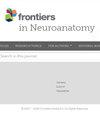Twelve protections evolved for the brain, and their roles in extending its functional life
IF 2.1
4区 医学
Q1 ANATOMY & MORPHOLOGY
引用次数: 0
Abstract
As human longevity has increased, we have come to understand the ability of the brain to function into advanced age, but also its vulnerability with age, apparent in the age-related dementias. Against that background of success and vulnerability, this essay reviews how the brain is protected by (by our count) 12 mechanisms, including: the cranium, a bony helmet; the hydraulic support given by the cerebrospinal fluid; the strategically located carotid body and sinus, which provide input to reflexes that protect the brain from blood-gas imbalance and extremes of blood pressure; the blood brain barrier, an essential sealing of cerebral vessels; the secretion of molecules such as haemopexin and (we argue) the peptide Aβ to detoxify haemoglobin, at sites of a bleed; autoregulation of the capillary bed, which stabilises metabolites in extracellular fluid; fuel storage in the brain, as glycogen; oxygen storage, in the haemoprotein neuroglobin; the generation of new neurones, in the adult, to replace cells lost; acquired resilience, the stress-induced strengthening of cell membranes and energy production found in all body tissues; and cognitive reserve, the ability of the brain to maintain function despite damage. Of these 12 protections, we identify 5 as unique to the brain, 3 as protections shared with all body tissues, and another 4 as protections shared with other tissues but specialised for the brain. These protections are a measure of the brain’s vulnerability, of its need for protection. They have evolved, we argue, to maintain cognitive function, the ability of the brain to function despite damage that accumulates during life. Several can be tools in the hands of the individual, and of the medical health professional, for the lifelong care of our brains.大脑进化出了12种保护措施,以及它们在延长大脑功能寿命方面的作用
随着人类寿命的延长,我们开始了解大脑在老年时的功能,但也了解了它随着年龄增长的脆弱性,这在与年龄相关的痴呆症中表现得很明显。在成功和脆弱的背景下,这篇文章回顾了大脑是如何被(根据我们的统计)12种机制保护的,包括:头盖骨,一个骨头盔;脑脊液给予的液压支持;有战略意义的颈动脉体和窦,它们为反射提供输入,保护大脑免受血气失衡和极端血压的影响;血脑屏障,是封闭脑血管必不可少的屏障;在出血部位分泌血红素和(我们认为)肽a β等分子来解毒血红蛋白;毛细血管床的自动调节,稳定细胞外液中的代谢物;储存在大脑中的燃料,如糖原;氧储存,在血红蛋白神经球蛋白;在成人中产生新的神经元,以取代失去的细胞;获得性恢复力,在所有身体组织中发现的应力诱导的细胞膜和能量生产的增强;认知储备,即大脑在受到损伤的情况下保持功能的能力。在这12种保护中,我们确定5种是大脑所特有的,3种是所有身体组织共有的,另外4种是与其他组织共有的,但专门用于大脑。这些保护措施是衡量大脑的脆弱性,以及它对保护的需求。我们认为,它们的进化是为了维持认知功能,即大脑在生命中累积损伤的情况下仍能发挥功能的能力。有几种可以成为个人和医疗保健专业人员手中的工具,用于终身护理我们的大脑。
本文章由计算机程序翻译,如有差异,请以英文原文为准。
求助全文
约1分钟内获得全文
求助全文
来源期刊

Frontiers in Neuroanatomy
ANATOMY & MORPHOLOGY-NEUROSCIENCES
CiteScore
4.70
自引率
3.40%
发文量
122
审稿时长
>12 weeks
期刊介绍:
Frontiers in Neuroanatomy publishes rigorously peer-reviewed research revealing important aspects of the anatomical organization of all nervous systems across all species. Specialty Chief Editor Javier DeFelipe at the Cajal Institute (CSIC) is supported by an outstanding Editorial Board of international experts. This multidisciplinary open-access journal is at the forefront of disseminating and communicating scientific knowledge and impactful discoveries to researchers, academics, clinicians and the public worldwide.
 求助内容:
求助内容: 应助结果提醒方式:
应助结果提醒方式:


